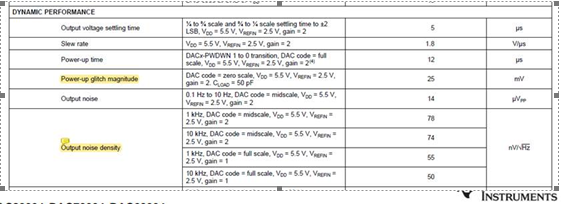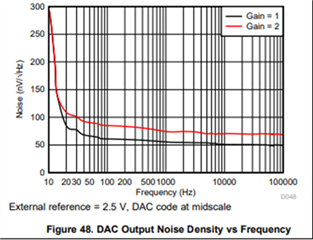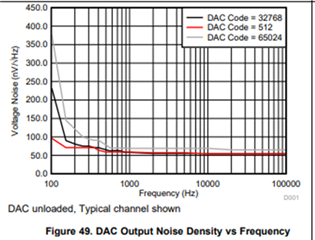Other Parts Discussed in Thread: TLV5614, DAC80004
Hi Team
Customer want to choose DAC80504 to replace TLV5614 to improve DAC output signal’s SNR feature. But I don’t find this spec value in DAC80504’S DS.
Can you kindly help for the below question?
- If the output noise density can be expressed as SNR?
- compare DAC80004 with b0504, 80004 has lower output noise density, if it means 80004 has better SNR feature?

DAC80504

dac80004







